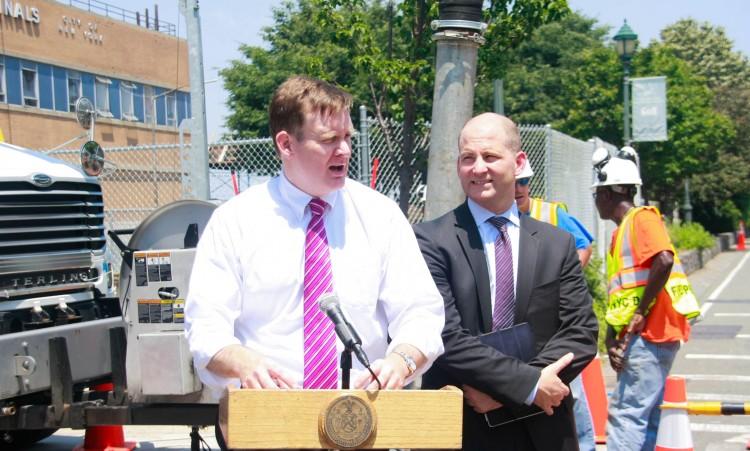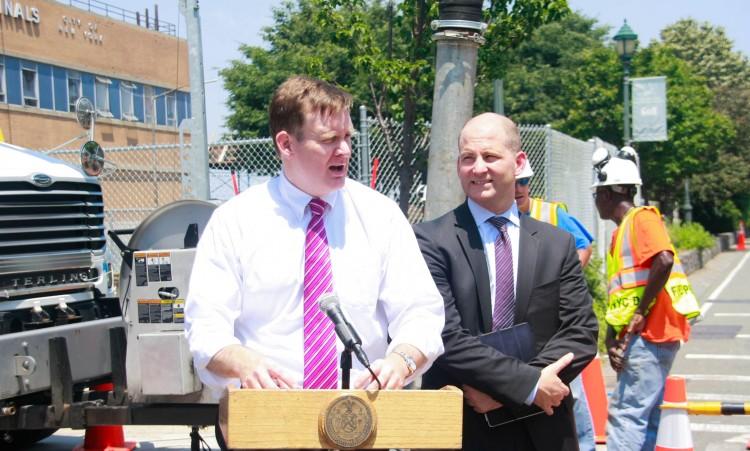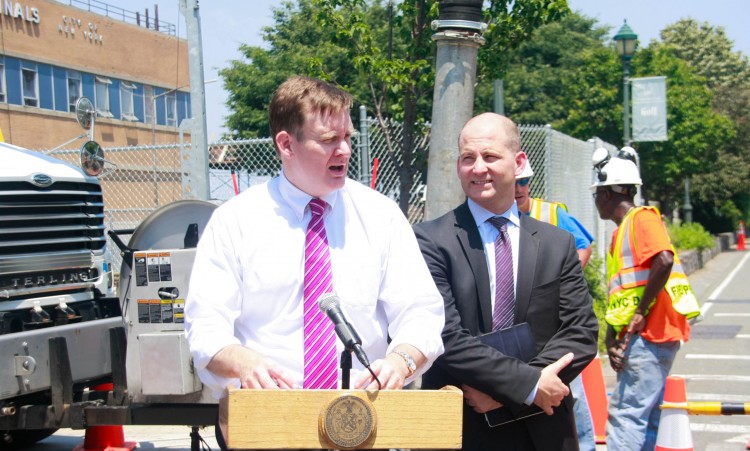Gigantic Cleanup Gives Sewers Extra Capacity
Debris collected from a citywide sewer cleanup project was enough to almost fill three Olympic-sized swimming pools, officials announced Thursday.

Carter Strickland Jr., (L), the city’s Department of Environmental Protection commissioner, and Cas Holloway, deputy mayor, announced Thursday the completed cleaning of 26 miles of pipe. Aric Chen/The Epoch Times

Zachary Stieber
Senior Reporter
|Updated:
Zachary Stieber is a senior reporter for The Epoch Times based in Maryland. He covers U.S. and world news. Contact Zachary at [email protected]
Author’s Selected Articles





